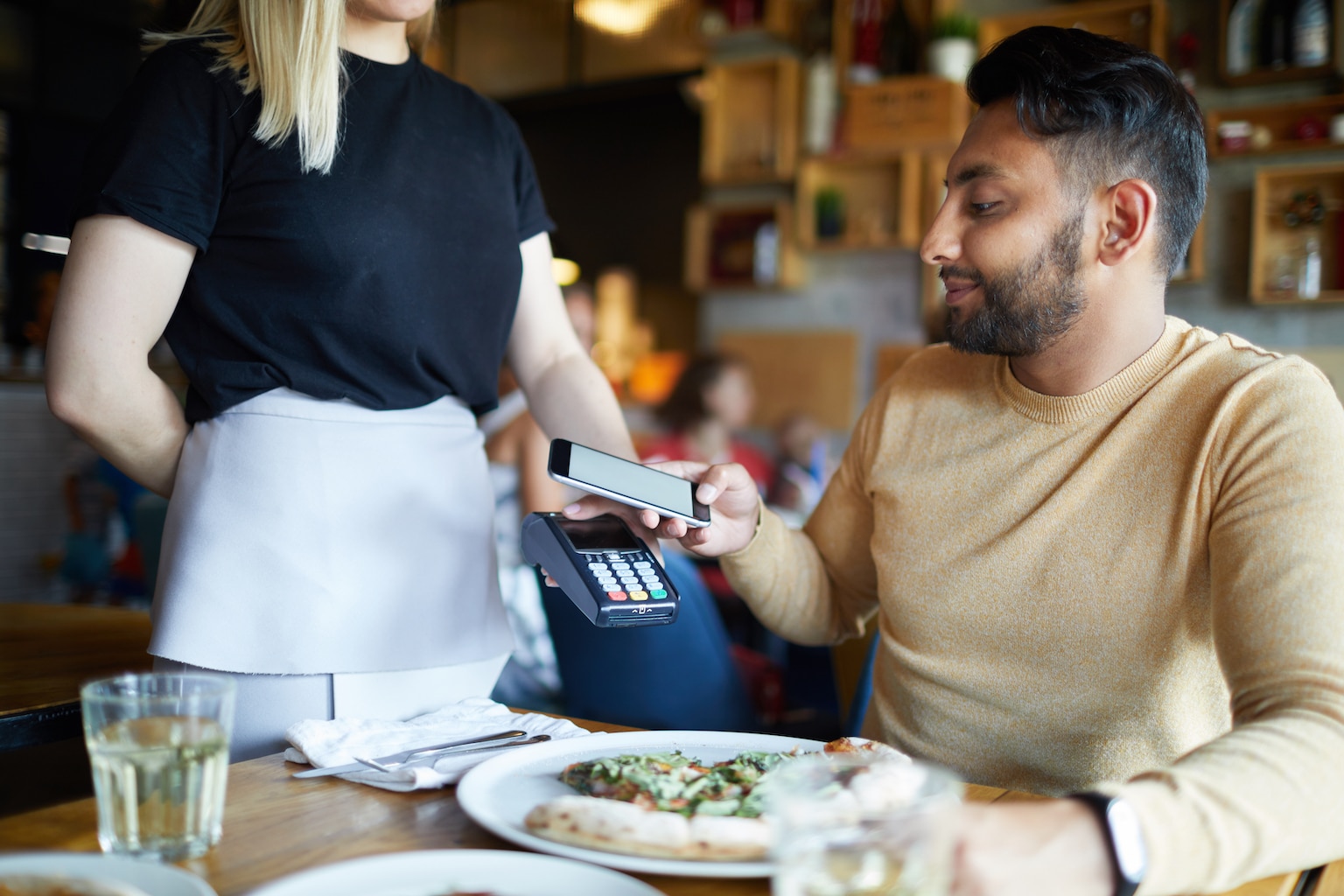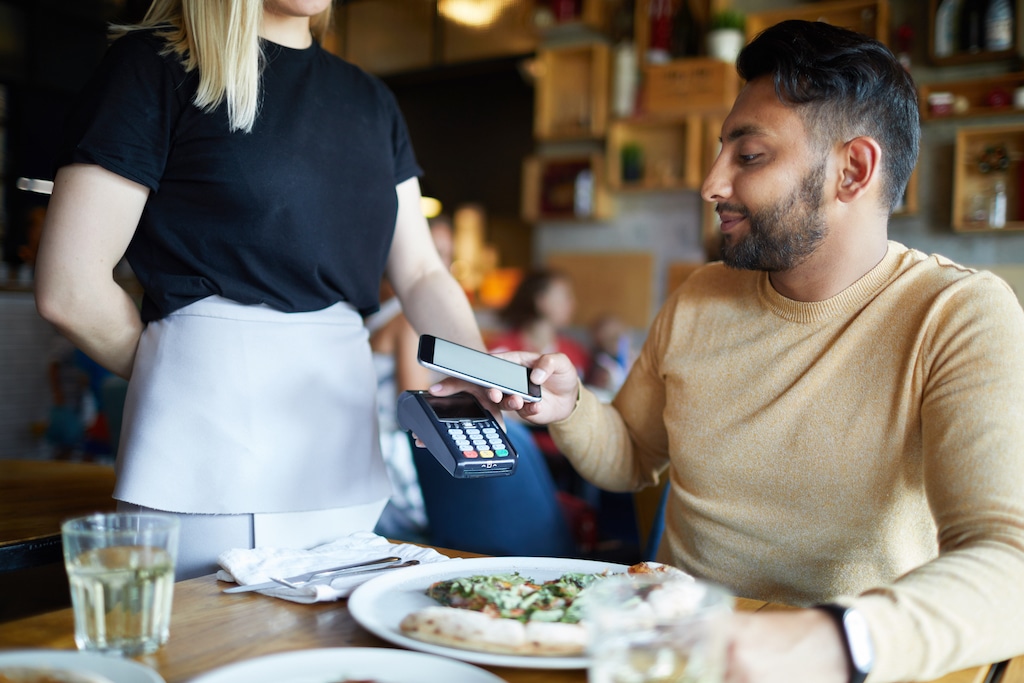
Are you looking for ways to elevate customer experiences while improving your restaurant’s ability to quickly and efficiently serve guests? Then, you might want to consider offering order and pay at the table technology.
What Is Order and Pay at the Table Technology?
Order and pay at the table technology gives restaurant customers the ability to review menus, place orders, and process payments through devices at their table. Rather than rely on a server, customers are empowered to move through their dining experience on their own terms.
Order and pay at the table grew in popularity during the COVID-19 pandemic when restaurants attempted to limit in-person interactions and the use of print menus. Now that customers are familiar with the process, there is an opportunity for more types of restaurants to embrace this technology and reap its benefits in both the short and long term.
The Benefits of Offering Order and Pay at the Table
Order and pay at the table technology benefits customers and restaurant staff and management.
No Wait Times to Place an Order: Customers can sit down and immediately get started on their orders. Even if they have an assigned server, customers can submit orders for additional drinks or food items at any time.
Faster Food Delivery: Speed ordering leads to speedy food service. Customers can place their orders faster, cutting down on overall dining time. Plus, food runners and servers can spend more time delivering food instead of taking and processing orders.
Increased Table Turns: Less wait time to order and faster food delivery moves customers in and out of a restaurant quicker. When customers order, eat, and pay faster, tables can turn quicker, offering your restaurant more opportunities to serve new guests.
More Accurate Orders: When customers place orders on their own, they control every ingredient, making their orders more accurate. Tableside tablets allow customers to easily customize their meals and send their orders directly to the kitchen where orders appear on a kitchen display system.
Upsell Promotions: As customers go through their orders, a tableside tablet can prompt them to add on sides, desserts, and drinks. Upsell promotions can encourage customers to order more and increase each ticket size.
Featured Promos: Digital ordering screens give restaurants an opportunity to put promotions and ads directly in front of customers. Use screen content to promote upcoming events, new menu items, coupons, and more.
Customer Database Growth: When customers place their orders, restaurants can invite them to enter their email address or phone number. This process builds a customer database that can be used for loyalty programs and remarketing campaigns.
Less Reliance on Staff: Order and pay at the table technology lessens the demand on staff. A restaurant can operate just as smoothly with fewer servers, cutting overhead costs and reducing staffing needs and issues.
Instant Menu Updates: Digital menus allow restaurants the ability to add and remove items instantly. Restaurants can remove items that run out or promote items that are overstocked, aiding in better restaurant inventory management.
Higher Tips: When customers pay through digital devices, they can be prompted with tip suggestions which can lead to higher tips for staff.
Pay at the Table Devices
There are a few ways to offer order and pay at the table devices in your restaurant.
POS System
The key to offering order and pay at the table is a point-of-sale (POS) system. A restaurant POS connects your pay at the table device to your kitchen. When a customer places an order, the order is immediately sent to your kitchen staff. If you want to offer ordering from the table, you will need a POS system synced with either online ordering or a POS tablet.
Related: Top Restaurant POS Systems: The Comparative Buyer’s Guide
Online Ordering & QR Codes
Customers can order and pay at the table through the same process they would take to place an online order. Restaurants can place a QR code on a table. Customers scan it to go to an online ordering portal. Online ordering can happen through a website or branded app, as long as the ordering system is synced with the POS system in the kitchen.
POS Tablets
Instead of asking customers to use their own devices to place orders, restaurants can provide on-table tablet ordering devices. On-table touchscreen tablets act as self-ordering kiosks that customers use to order for themselves. At Lavu, we offer iPad POS tablets to give customers a tool they already know and love.
Related: Be More Efficient with Self-Ordering Restaurant Technology
Types of Restaurants that Can Offer Pay at the Table
As more and more customers become familiar with order and pay at the table technology, it opens the doors for all types of restaurants to embrace these tools.
Quick Service: Fast food and quick service restaurants can invite customers to take a seat while they order and wait for their food. Use a tableside quick service POS so customers can place an order and pick it up at the counter when it’s ready.
Fast Casual: Fast casual restaurants can offer speedier service without downgrading food quality using tableside ordering. Guests can quickly enter their order without waiting in line and easily split up checks and place separate orders when in a group.
Full Service: Even full service, sit-down restaurants can benefit from order and pay at the table. Combine it with tableside service so guests don’t have to wait for a server when they are ready to order another drink or add on dessert.
How to Offer Pay at the Table
Order and pay at the table technology is becoming the norm for restaurants ranging from fast food to full service. Don’t miss out on the many benefits of using this tableside technology. Schedule a demo to see how Lavu’s POS system can help you offer order and pay at the table options.
Or, download our free ebook to learn more about the benefits of using tableside ordering and payment processing. Download our free guide Speeding Up Restaurant Service with a Tableside POS for free today.


